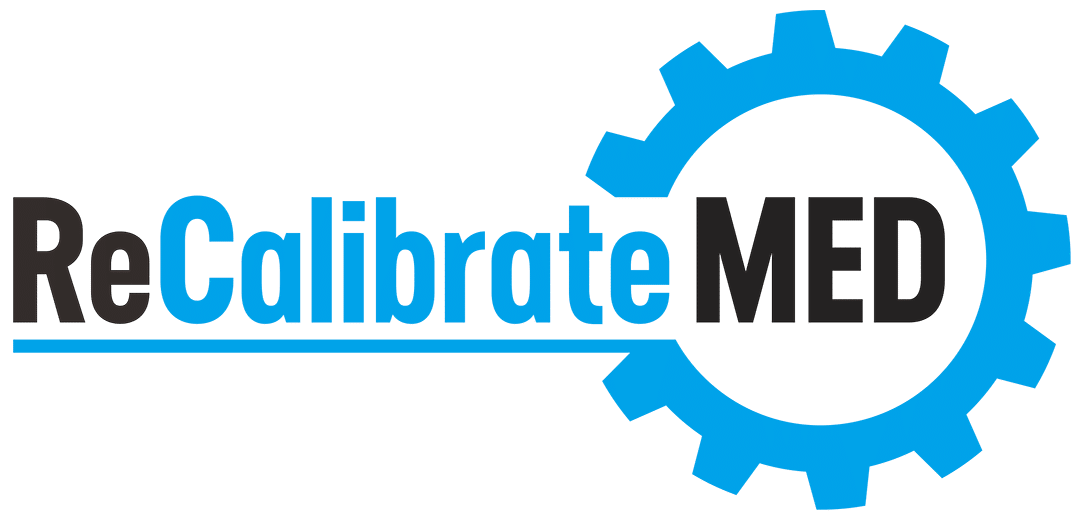Low testosterone, also known as low T, refers to a condition where the body does not produce enough testosterone hormone. Testosterone plays a crucial role in various aspects of male health, including sexual function, muscle mass, bone density, and mood regulation. When testosterone levels decline below normal, it can lead to a range of symptoms and health issues.
Common symptoms of low testosterone include fatigue, decreased sex drive, erectile dysfunction, depression, irritability, and reduced muscle mass. These symptoms can significantly impact a man’s quality of life, affecting both physical and mental well-being.
It’s important to note that the symptoms of low T can vary from person to person, and some men may experience more severe symptoms than others. If you suspect you may have low testosterone, it’s crucial to consult with a healthcare professional for proper diagnosis and treatment options.
The Importance of Diagnosing Low T
Diagnosing low testosterone requires a comprehensive evaluation by a healthcare professional. While the symptoms of low T may be indicative of the condition, they can also be associated with other health issues. Therefore, it’s crucial to undergo a series of tests to confirm the diagnosis and rule out any underlying medical conditions.
During the diagnostic process, your healthcare provider may measure your testosterone levels through a blood test. This test typically involves taking a sample of your blood and analyzing it in a laboratory. It’s essential to perform this test in the morning when testosterone levels are usually at their highest.
In addition to blood tests, your healthcare provider may also inquire about your medical history, perform a physical examination, and assess any other symptoms you may be experiencing. By conducting a thorough evaluation, your healthcare provider can accurately diagnose low T and recommend appropriate treatment options.
Exploring the Different Treatment Options for Low Testosterone
Once diagnosed with low testosterone, you have several treatment options to consider. The choice of treatment will depend on various factors, including the severity of your symptoms, your overall health, and personal preferences.
One of the most common treatment options for low T is testosterone replacement therapy (TRT). TRT involves supplementing your body with testosterone either through injections, patches, gels, or pellets. This therapy aims to restore testosterone levels to a normal range and alleviate the symptoms associated with low T.
Testosterone replacement therapy has been shown to be effective in improving energy levels, sexual function, muscle mass, and mood in men with low testosterone. However, it’s important to note that TRT may not be suitable for everyone. Your healthcare provider will assess your individual needs and determine if TRT is the right choice for you.
In addition to TRT, there are also natural remedies and lifestyle changes that can help improve testosterone levels. These include regular exercise, a healthy diet, stress management, and getting enough sleep. While these approaches may not provide the same level of testosterone increase as TRT, they can still have a positive impact on overall health and well-being.
Debunking Myths and Misconceptions about Low T Treatment
When it comes to low T treatment, there are several myths and misconceptions that can cloud judgment and lead to confusion. Let’s debunk some of the most common myths surrounding low T treatment to ensure you have accurate information.
Myth 1: Testosterone replacement therapy (TRT) is dangerous and leads to heart problems.
Fact: While there have been concerns about cardiovascular risks associated with TRT, recent studies have shown that when used appropriately, TRT does not increase the risk of heart problems. It’s important to work closely with your healthcare provider to monitor your cardiovascular health while on TRT.
Myth 2: Testosterone therapy will lead to aggressive behavior and mood swings.
Fact: When used correctly, testosterone therapy does not cause aggressive behavior or mood swings. In fact, it can often improve mood and well-being in men with low testosterone.
Myth 3: Natural remedies are just as effective as testosterone replacement therapy (TRT).
Fact: While natural remedies and lifestyle changes can help improve testosterone levels to some extent, they may not provide the same level of increase as TRT. It’s essential to discuss your options with a healthcare professional to determine the most appropriate treatment plan for your specific needs.
By dispelling these myths and misconceptions, we can ensure that individuals considering low T treatment have accurate information to make informed decisions about their health.
Potential Risks and Side Effects of Low T Treatment
Like any medical treatment, low T treatment, including testosterone replacement therapy (TRT), carries potential risks and side effects. It’s important to be aware of these risks and discuss them with your healthcare provider before initiating any treatment.
One potential risk of TRT is the development of blood clots. Testosterone can increase the production of red blood cells, which can lead to thickening of the blood and an increased risk of clot formation. It’s crucial to undergo regular blood tests to monitor your hematocrit levels and adjust your treatment if necessary.
Another possible side effect of TRT is the suppression of natural testosterone production. When external testosterone is introduced into the body, the body’s natural production of testosterone may decrease. This can lead to testicular shrinkage and infertility. However, these effects are usually reversible once TRT is discontinued.
Other potential side effects of TRT may include acne, fluid retention, breast enlargement, and sleep apnea. It’s important to discuss these potential risks and side effects with your healthcare provider to determine if the benefits of treatment outweigh the risks in your specific case.
Safety Considerations When Undergoing Low T Treatment
While low T treatment can be effective in improving symptoms and overall well-being, it’s essential to prioritize safety throughout the treatment process. Here are some key safety considerations to keep in mind:
- Regular monitoring: It’s crucial to undergo regular blood tests to monitor your testosterone levels, hematocrit levels, and overall health while on treatment. This allows your healthcare provider to make any necessary adjustments and ensure your safety.
- Individualized treatment: Low T treatment should be tailored to your specific needs and health concerns. Your healthcare provider will consider factors such as your age, overall health, and medical history when determining the most appropriate treatment plan for you.
- Open communication: It’s important to maintain open and honest communication with your healthcare provider throughout the treatment process. If you experience any side effects or concerns, don’t hesitate to discuss them with your healthcare provider for proper evaluation and management.
By prioritizing safety and working closely with your healthcare provider, you can ensure that your low T treatment is as safe and effective as possible.
The Role of Testosterone Replacement Therapy (TRT) in Low T Treatment
Testosterone replacement therapy (TRT) is one of the most common and effective treatment options for low testosterone. It involves supplementing your body with testosterone to restore levels to a normal range and alleviate the symptoms associated with low T.
TRT can be administered in various forms, including injections, patches, gels, and pellets. Your healthcare provider will determine the most appropriate method based on your individual needs and preferences.
While TRT can be highly effective in improving energy levels, sexual function, muscle mass, and mood, it’s important to note that it may not be suitable for everyone. Certain medical conditions, such as prostate cancer and sleep apnea, may contraindicate the use of TRT. It’s crucial to discuss your medical history and any existing health conditions with your healthcare provider before initiating TRT.
Additionally, TRT requires regular monitoring to ensure safety and efficacy. Your healthcare provider will conduct periodic blood tests to assess your testosterone levels, hematocrit levels, and overall health. This allows for any necessary adjustments to be made and ensures that you are receiving the optimal dose of testosterone.
Alternative Natural Remedies for Low Testosterone
In addition to testosterone replacement therapy (TRT), there are alternative natural remedies that can help improve testosterone levels in men with low T. While these remedies may not provide the same level of increase as TRT, they can still have a positive impact on overall health and well-being.
- Regular exercise: Engaging in regular physical activity, especially resistance training and high-intensity interval training (HIIT), can help boost testosterone levels naturally. Aim for at least 150 minutes of moderate-intensity exercise or 75 minutes of vigorous exercise per week.
- Healthy diet: Consuming a nutritious diet that includes a variety of fruits, vegetables, whole grains, lean proteins, and healthy fats can support testosterone production. Certain foods, such as oysters, tuna, eggs, and fortified dairy products, are rich in nutrients that can help promote healthy testosterone levels.
- Stress management: Chronic stress can negatively impact testosterone production. Engaging in stress-reducing activities, such as meditation, mindfulness, and deep breathing exercises, can help lower stress levels and support healthy testosterone levels.
- Sufficient sleep: Getting enough quality sleep is crucial for testosterone production. Aim for 7-9 hours of uninterrupted sleep each night to support optimal hormone balance.
While these natural remedies may not be as potent as TRT, they can still be effective in improving testosterone levels and overall well-being. It’s important to discuss these options with your healthcare provider to determine the best approach for your specific needs.
Conclusion: Making Informed Decisions about Low T Treatment
In conclusion, low testosterone (low T) treatment can be a safe and effective option for men experiencing symptoms of low testosterone. Understanding the impact of low T, the importance of proper diagnosis, and the various treatment options available is crucial in making informed decisions about your health.
Testosterone replacement therapy (TRT) is one of the most common and effective treatment options for low T. While TRT can provide significant improvements in energy levels, sexual function, muscle mass, and mood, it may not be suitable for everyone. It’s important to work closely with your healthcare provider to determine the most appropriate treatment plan for your specific needs.
In addition to TRT, alternative natural remedies and lifestyle changes can also help improve testosterone levels in men with low T. While these approaches may not provide the same level of increase as TRT, they can still have a positive impact on overall health and well-being.
Remember to prioritize safety throughout the treatment process by undergoing regular monitoring, maintaining open communication with your healthcare provider, and discussing any concerns or side effects that may arise.
Don’t let doubts hold you back from achieving optimal health. By debunking myths, understanding the potential risks and benefits, and exploring the different treatment options available, you can make informed decisions about low T treatment and take control of your well-being.
Take the first step towards a healthier you by consulting with a healthcare professional and exploring the options that are right for you. With the right treatment and support, you can reclaim your vitality and enjoy a better quality of life. Call us today at (910) 420-0443.





